
The SAP Group Reporting training course provides a comprehensive introduction to SAP S/4HANA's financial consolidation capabilities. Participants will learn to streamline group financial statements, manage intercompany eliminations, and ensure compliance with regulatory requirements. The course covers data integration, report generation, and real-time analysis, equipping users with the skills to optimize their organization's financial consolidation process. Ideal for finance professionals seeking to enhance their expertise in SAP's advanced reporting tools.
SAP Group Reporting Interview Questions Answers - For Intermediate
1. How does SAP Group Reporting facilitate the preparation of consolidated cash flow statements?
SAP Group Reporting automates the preparation of consolidated cash flow statements by aggregating cash flows from individual entities, adjusting for intercompany transactions, and presenting them under operating, investing, and financing activities in a consolidated format.
2. What is the significance of the Data Monitor in SAP Group Reporting?
The Data Monitor is crucial for tracking the status and quality of data submissions from individual entities. It helps in identifying and resolving data discrepancies or validation errors during the consolidation process.
3. Can SAP Group Reporting handle multiple accounting principles?
Yes, it supports multiple accounting principles, allowing companies to report according to International Financial Reporting Standards (IFRS), Generally Accepted Accounting Principles (GAAP), and other local accounting standards simultaneously.
4. How does SAP Group Reporting address the elimination of investment in subsidiaries?
It automates the elimination of investment in subsidiaries by reversing the equity and investment amounts during consolidation, ensuring that only external transactions are reflected in the consolidated financials.
5. Explain the process of intercompany profit elimination in SAP Group Reporting.
Intercompany profit elimination is done to remove profits arising from transactions between group entities. SAP Group Reporting identifies and eliminates these profits to ensure that consolidated financial statements reflect only profits from external transactions.
6. How are equity and debt consolidation methods handled in SAP Group Reporting?
SAP Group Reporting supports both equity and debt consolidation methods, allowing adjustments based on the percentage of ownership in subsidiaries (for the equity method) or fully consolidating the financials of subsidiaries where control exists (for the debt method).
7. What role do versions play in SAP Group Reporting?
Versions in SAP Group Reporting allow for the creation of different scenarios or simulations, facilitating comparison and analysis of various consolidation outcomes based on different assumptions or data sets.
8. How does SAP Group Reporting support the management of complex group structures?
It offers flexibility in defining and managing complex group structures, including multiple layers of subsidiaries and cross-ownership scenarios, ensuring accurate consolidation and reporting.
9. Describe the process of managing manual journal entries in SAP Group Reporting.
Manual journal entries in SAP Group Reporting are used for adjustments or allocations that cannot be automated. The process includes creating, approving, and posting entries, with full audit trails for compliance and transparency.
10. How does SAP Group Reporting integrate with SAP Analytics Cloud?
It seamlessly integrates with SAP Analytics Cloud to enhance reporting and analysis capabilities, offering advanced visualization, planning, and predictive analytics functionalities for consolidated financial data.
11. What is a Consolidation Group in SAP Group Reporting, and how is it defined?
A Consolidation Group consists of a parent company and its subsidiaries, defined based on legal ownership or management control. It's the primary entity for which financial consolidation is performed.
12. How do you handle minority interest in SAP Group Reporting?
Minority interest is automatically calculated and presented in the consolidated financial statements, representing the portion of equity in subsidiaries not owned by the parent company.
13. What are the steps to perform a financial close in SAP Group Reporting?
The financial close process in SAP Group Reporting involves data collection, validation, consolidation adjustments, intercompany reconciliation, consolidation of investments, currency translation, and reporting.
14. How does SAP Group Reporting assist in audit and compliance?
It provides detailed audit trails, supports compliance with international accounting standards, and includes controls and validations to ensure the accuracy and integrity of the consolidation process.
15. Explain how SAP Group Reporting deals with changes in foreign exchange rates.
It applies the relevant exchange rates for currency translation, adjusting consolidated financial statements for changes in exchange rates according to specified accounting standards.
16. What is the significance of the Universal Journal in SAP Group Reporting?
The Universal Journal acts as a single source of truth, integrating financial and controlling information into one comprehensive data structure, facilitating real-time consolidation and reporting.
17. How does SAP Group Reporting ensure data privacy and security?
It employs SAP’s robust security features, including role-based access control, data encryption, and compliance with data protection regulations, to ensure data privacy and security.
18. Can SAP Group Reporting be customized to fit specific business needs?
Yes, it offers flexibility in customization through configuration options, allowing businesses to tailor the consolidation process, reporting formats, and workflows to their specific requirements.
19. How does SAP Group Reporting handle joint ventures and associated companies?
It supports different methods of accounting for joint ventures and associates, such as equity method or proportionate consolidation, based on the level of control or influence.
20. What is the future direction of SAP Group Reporting?
SAP Group Reporting is evolving towards further integration with SAP’s cloud solutions, enhancing user experience through SAP Fiori, and leveraging advanced analytics and AI to streamline consolidation processes and insights.
SAP Group Reporting Interview Questions Answers - For Advanced
1. Explain the integration process of SAP Group Reporting with SAP S/4HANA Finance and other SAP modules.
SAP Group Reporting seamlessly integrates with SAP S/4HANA Finance by leveraging the Universal Journal (ACDOCA) as the single source of truth. This integration allows for real-time consolidation by pulling transactional data directly from S/4HANA without the need for complex data transfers. Additionally, it integrates with other SAP modules such as SAP Analytics Cloud for advanced reporting and analytics, SAP BPC (Business Planning and Consolidation) for planning and forecasting, and SAP Data Services for ETL processes. This comprehensive integration ensures that financial data across various modules remains consistent, accurate, and up-to-date, facilitating efficient financial consolidation and reporting.
2. Describe the key steps involved in the financial consolidation process within SAP Group Reporting.
The financial consolidation process within SAP Group Reporting involves several key steps:
- Data Collection: Collecting financial data from various entities within the organization, ensuring all data is accurate and complete.
- Currency Translation: Translating financial data into the group’s reporting currency using predefined exchange rates.
- Intercompany Reconciliation: Identifying and eliminating intercompany transactions to avoid double counting in the consolidated financial statements.
- Consolidation Adjustments: Making necessary adjustments for minority interests, equity adjustments, and other consolidation entries.
- Consolidation of Investments: Accounting for investments in subsidiaries, associates, and joint ventures.
- Consolidation Procedures: Applying consolidation methods such as full consolidation, proportionate consolidation, and equity method based on ownership percentages.
- Reporting: Generating consolidated financial statements and management reports for internal and external stakeholders.
3. How does SAP Group Reporting handle intercompany eliminations?
SAP Group Reporting handles intercompany eliminations through automated processes designed to identify and eliminate intercompany transactions and balances. The system matches intercompany payables and receivables, sales and purchases, and other intercompany transactions across the group's entities. By using predefined rules and configurations, the system ensures that these transactions are eliminated during the consolidation process to prevent double counting. The automation of these eliminations enhances accuracy and efficiency, reducing the manual effort required and minimizing the risk of errors.
4. What are the benefits of real-time consolidation in SAP Group Reporting?
Real-time consolidation in SAP Group Reporting offers several benefits:
-
- Timeliness: Financial data is consolidated as soon as transactions are posted, providing up-to-date financial statements.
- Accuracy: Reduces the risk of errors associated with manual data transfers and batch processing.
- Efficiency: Streamlines the consolidation process, allowing finance teams to focus on analysis rather than data collection and processing.
- Visibility: Enhances transparency and visibility into the financial performance of the entire group, enabling better decision-making.
- Compliance: Ensures adherence to regulatory requirements by maintaining accurate and consistent financial data.
5. Explain the concept of the Universal Journal in SAP S/4HANA and its relevance to SAP Group Reporting.
The Universal Journal (ACDOCA) in SAP S/4HANA is a single source of truth for financial and management accounting data. It consolidates data from various ledgers and sub-ledgers into a single, harmonized table. This integration is crucial for SAP Group Reporting as it allows for real-time access to financial data, eliminating the need for complex data migrations and reconciliations. The Universal Journal ensures that all financial transactions are recorded uniformly, enhancing data consistency and accuracy, which is essential for effective group reporting and consolidation.
6. How does SAP Group Reporting ensure compliance with different accounting standards and regulations?
SAP Group Reporting ensures compliance with various accounting standards and regulations by providing flexible configuration options and pre-built content for different regulatory requirements. Users can define multiple consolidation ledgers, each tailored to specific accounting standards such as IFRS, GAAP, or local regulations. The system supports multiple accounting principles, enabling organizations to generate financial statements that comply with different reporting standards simultaneously. Additionally, it provides audit trails, validation rules, and automated workflows to ensure that all regulatory requirements are met accurately and efficiently.
7. Discuss the role of SAP Analytics Cloud in enhancing the capabilities of SAP Group Reporting.
SAP Analytics Cloud (SAC) enhances the capabilities of SAP Group Reporting by providing advanced analytics, visualization, and planning functionalities. SAC integrates with SAP Group Reporting to offer real-time insights into consolidated financial data through interactive dashboards and reports. It enables users to perform in-depth analysis, create what-if scenarios, and forecast future financial performance. The integration of SAC with SAP Group Reporting allows organizations to leverage predictive analytics and machine learning to gain deeper insights into their financial data, driving more informed decision-making and strategic planning.
8. What is the importance of data validation and quality checks in the SAP Group Reporting process?
Data validation and quality checks are critical in the SAP Group Reporting process to ensure the accuracy and reliability of consolidated financial statements. These checks help identify and correct errors, inconsistencies, and anomalies in the financial data collected from various entities. By implementing robust validation rules and automated quality checks, organizations can prevent incorrect data from entering the consolidation process, reducing the risk of inaccuracies in the final reports. High data quality is essential for maintaining stakeholder trust and ensuring compliance with regulatory requirements.
9. How does SAP Group Reporting handle multi-currency consolidation?
SAP Group Reporting handles multi-currency consolidation by providing comprehensive currency translation capabilities. Financial data from different entities, recorded in their respective local currencies, is translated into the group's reporting currency using predefined exchange rates. The system supports multiple currency translation methods, including average rates for income statement items and closing rates for balance sheet items. SAP Group Reporting ensures that currency translation adjustments are accurately reflected in the consolidated financial statements, maintaining the integrity of financial data across different currencies.
10. Describe the process of handling minority interests in SAP Group Reporting.
Handling minority interests in SAP Group Reporting involves several steps to accurately reflect the ownership structure in consolidated financial statements. The system identifies the portion of equity and net income attributable to minority shareholders based on their ownership percentage. This involves:
- Calculation of Minority Interests: Calculating the share of net income and equity that belongs to minority shareholders.
- Consolidation Adjustments: Making necessary adjustments to the consolidated financial statements to separate the interests of the parent company and minority shareholders.
- Reporting: Clearly presenting minority interests in the consolidated balance sheet and income statement, ensuring transparency and compliance with accounting standards. This process ensures that the financial statements accurately represent the economic reality of the group's ownership structure.
Course Schedule
| Jan, 2026 | Weekdays | Mon-Fri | Enquire Now |
| Weekend | Sat-Sun | Enquire Now | |
| Feb, 2026 | Weekdays | Mon-Fri | Enquire Now |
| Weekend | Sat-Sun | Enquire Now |
Related Courses
Related Articles
- Discover the Career Benefits of Enrolling in RSA Archer Training
- Certify Your Expertise: PingDirectory Certification and Training Course for Proficient Identity Management
- Streamline Revenue Management with SAP Financial Contract Accounting
- Key Features of SPI Intools for Efficient Instrumentation Design
- Understanding the Benefits of SmartPlant P&ID for Process Plant Design
Related Interview
Related FAQ's
- Instructor-led Live Online Interactive Training
- Project Based Customized Learning
- Fast Track Training Program
- Self-paced learning
- In one-on-one training, you have the flexibility to choose the days, timings, and duration according to your preferences.
- We create a personalized training calendar based on your chosen schedule.
- Complete Live Online Interactive Training of the Course
- After Training Recorded Videos
- Session-wise Learning Material and notes for lifetime
- Practical & Assignments exercises
- Global Course Completion Certificate
- 24x7 after Training Support




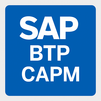


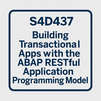
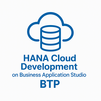
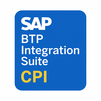
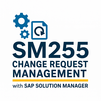

 Join our Live Instructor-Led online classes delivered by industry experts
Join our Live Instructor-Led online classes delivered by industry experts